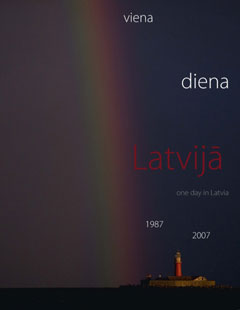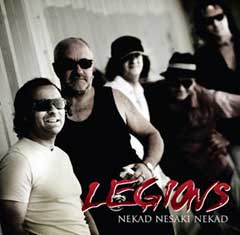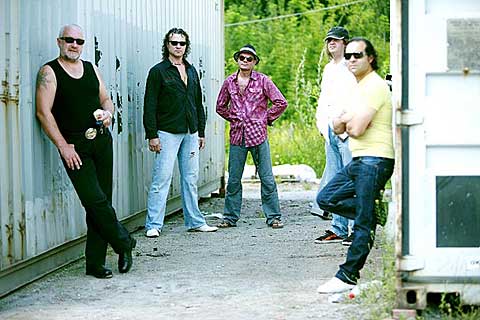
One of the most ambitious artistic projects in the dying days of Soviet Latvia was “Viena diena Latvijā” (One Day in Latvia), held on Aug. 31, 1987, and organized by photographers Jānis Krūmiņš, Ints Kalniņš and Gunārs Janaitis. Seventy-four photographers from many different countries were sent out all over Latvia, simply to take pictures of things that were happening on that day.
The project resulted in more than 34,000 negatives—a staggering number. Unfortunately, because of a lack of hard currency, the pictures were never published. For 20 years, the pictures were stored at the Rīga Museum of History and Shipping. Though the pictures did not get published, the event was a milestone, as some of the photographers come from outside of the Soviet-influenced world (from countries such as Finland and West Germany), and even were allowed to photograph in places that normally would be well off limits to foreigners.
To commemorate the 20th anniversary of the event, the project was repeated on Aug. 31, 2007, this time with 55 professional photographers (31 from Latvia and 24 international), as well as 120 guest photographers, and every Latvian was even invited to submit pictures, resulting in half a million images.
Highlights of both days are collected in the coffee table book Viena diena Latvijā. 1987-2007 (One Day in Latvia, 1987-2007), a mammoth collection that gathers just a small fraction of all the photographs taken.
About 25 percent of the book is pictures from 1987, the rest from 2007. Most all of the pictures from 1987 are in black-and-white, while the 2007 collection is mainly in color.
Most of the pictures are candid snapshots of a way of life or of a moment in time. Highlights from the 1987 collection include a picture by Estonian photographer Viktors Rudjko of passengers on a bus in Valka (a border town on the Estonian border), in which we see people reading four different newspapers: a Russian-language paper about Estonia, the Latvian papers Cīņa and Padomju Jaunatne, and Pravda. In a picture by Irina and Viktors Kolpakovs, postal worker Anna Liepiņa of Preiļi seems to be sharing a newspaper with her horse. There are also historically significant photos of a period that seems to be a lifetime away, such as the shot by Vilhems Mihailovskis of a long line of people at a grocery store in Daugavpils. A picture by Leons Balodis shows Krišjāņa Barona Street in Rīga, which in many ways is unrecognizable compared to the street today.
Favorites from the 2007 event include the picture by Varis Sants of Imants Albrehts and Vilma Feldmane, both legless residents at the Rokaiži Social Care Center in Liepāja. Ainārs Šlesers, then the transport minister, appears in a photo by Andris Eglītis with a rather surprised look on his face. Ilmārs Znotiņš photographed the meat inspection room in the Rīga Central Market, with a line of pig snouts awaiting review. A picture by Oļegs Zernovs of the Latgale liberation monument “Latgales Māra” in Rēzekne captures the statue in profile and under a nearly full moon.
These are just a few of the thousands of photographs in this impressive collection. Even more pictures may be viewed on the project’s official Web site, www.vienadiena.lv.
Not all pictures were taken in Latvia. For example, a picture by Oskars Lejnieks shows the Latvian unit located in Afghanistan. Another photo shows rock group Prāta vētra on the road to St. Petersburg.
All photos are captioned in Latvian and in English, and there are statements from the main organizers that are also translated into English.
This hefty book (with a hefty price tag of LVL 49.99) provides a fascinating look through Latvia in the final years of Soviet occupation, as well as almost 20 years after regaining its freedom. The differences in certain ways are striking, but in certain ways many things have not changed at all. The book provides endless hours of browsing. Many of the pictures have a depth to them, relating a detailed story of some kind. It is truly an inspiring project, offering an intriguing travel back in time to 1987 and what Latvia was like then, as well as a kaleidoscope of the varied facets of the country in 2007.
Details
Viena diena Latvijā, 1987-2007
Ilmārs Znotiņš, photo editor
Rīga: Vienadiena.lv and Jāņa Rozes apgāds, 2008
ISBN 978-9984-23-285-0






